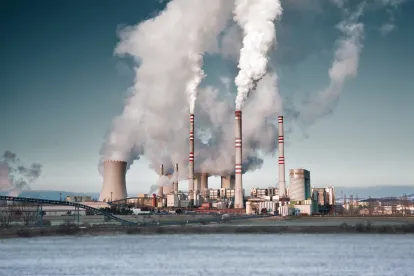On Valentine’s Day, the EPA issued its initial guidance on the design of the Greenhouse Gas Reduction Fund (GGRF) program created by President Biden’s Inflation Reduction Act (IRA). This guidance provides direction for “eligible recipients” to apply for $27 billion in funding from the long-awaited “green bank” that that will provide “financial and technical assistance for projects that reduce or avoid greenhouse gas emissions and other forms of air pollution, with a particular emphasis on projects in low-income and disadvantaged communities.”
The IRA added Section 134 to the Clean Air Act to establish the GGRF. In the guidance, the EPA said it has posted Federal Assistance Listings announcing it will hold two competitions to distribute grant funding to meet the GGRF objectives, which are to: “(1) reduce emissions of greenhouse gases and other air pollutants; (2) deliver benefits to low-income and disadvantaged communities; and (3) mobilize financing and private capital to stimulate additional deployment of greenhouse gas and air pollution reducing projects.”
The two competitions to distribute grant funding are:
-
$20 billion General and Low-Income Assistance Competition that will award competitive grants to implement Clean Air Act Section 134(a)(2) and Section 134(a)(3). The EPA must obligate the $20 billion for grants under this program to states, nonprofits and other eligible recipients by Sept. 30, 2024. This part of the GGRF funding will prioritize investment in residential and community solar projects, as well as storage technologies and upgrades related to these projects, and will support the creation of high-paying jobs. According to the EPA’s assistance listing, a minimum of $8 billion will be “for the purposes of providing financial and technical assistance in low-income and disadvantaged communities as required by Section 134(a)(3) of the Clean Air Act and in alignment with the Biden-Harris Administration’s Justice40 Initiative.” The EPA says that it expects to award between two and 15 grants through this program.
-
$7 billion Zero-Emissions Technology Fund Competition that will prioritize residential and community solar projects, as well as storage technologies and upgrades related to these projects. Pursuant to Section 134(a)(1) of the Clean Air Act, the EPA must obligate the $7 billion for grants to states, municipalities, tribal governments, and other “eligible recipients” under this program by Sept. 30, 2024. The EPA reports it is still developing this program and will determine the range and average of financial assistance as part of the Notices of Funding Opportunities (NOFO) development process.
The EPA says it anticipates opening the competitions for the funding in summer 2023. The evaluation and selection criteria for competitive awards under these assistance listings and deadlines for application submission will be included in the NOFOs. The NOFOs also will clarify the timeline of the grant competition and funding obligations. When finalized, the NOFOs for both listings will be posted on grants.gov.
Along with the listings, the EPA announced a national Community Roundtable program focused on introducing the GGRF to communities across the country and learning about community-level projects the fund can support.
Welcome as this EPA action may be, it is more of a ”soft opening” for the Green Bank than a grand one, considering that the EPA was supposed to begin distributing dollars from the GGRF in February 2023, and that the agency has a statutory obligation to complete the distributions from the fund by Sept. 30 2024. The Environmental Financial Advisory Board (EFAB) guidance and considerations delivered to the EPA on Jan 3, 2023, highlighted the complexity of the EPA’s task and the difficulties the agency faces in designing and implementing a GGRF program that can meet the competing goals and policies, and navigate the political minefield.
As always, the devil will be in the details; and notwithstanding the enormity of the task, the EPA needs to honor the commitment made in its announcement to keep “moving expeditiously to develop these two grant competitions, utilizing the established technical expertise of agency officials in EPA and across the US government, to invest public funding transparently and inclusively and deliver significant investments in the American people.”




 />i
/>i

